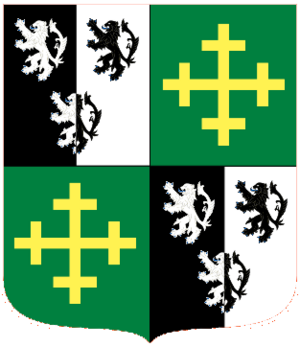William Palliser facts for kids
Sir William Palliser (18 June 1830 – 4 February 1882) was a clever inventor and politician from Ireland who lived during the Victorian era. He was a Member of Parliament (MP), which means he helped make laws for Great Britain. He is most famous for his military inventions, including a new type of cannonball and a way to upgrade old guns.
Contents
Early Life and Education
William Palliser was born in Dublin, Ireland, on 18 June 1830. His father was a high-ranking army officer, and William was one of eight sons. His brother, John Palliser, grew up to be a famous geographer and explorer.
Coming from a well-off family, William received an excellent education. He first attended the famous Rugby School. Later, he studied at Trinity College Dublin and then at Trinity Hall, Cambridge, two of the best universities in the world. He also went to the Staff College at Sandhurst to train as a military officer.
A Career as a Soldier and Inventor
Palliser's career was a mix of military service and brilliant inventing. He used his knowledge from both fields to make a big impact on the British military.
Military Service
In 1855, Palliser joined the British Army as an officer in the Rifle Brigade. He served in the Crimean War, a major conflict involving Britain, France, and Russia.
A few years later, in 1858, he transferred to a cavalry unit called the 18th Light Dragoons, where soldiers fought on horseback. He was a good officer and was promoted several times, eventually reaching the rank of Major. He retired from the full-time army in 1871 but later joined the volunteer forces, becoming a lieutenant colonel.
Inventions for the Military
Even while he was a soldier, Palliser was busy inventing. He was especially interested in ordnance, which means military weapons like large cannons. In total, he patented 21 of his inventions.
The Palliser Shot
His most famous invention was the Palliser shot. This was a new type of artillery shell designed to break through the thick iron armor that was being added to warships at the time.
Before Palliser's invention, cannonballs would often shatter when they hit iron plates. Palliser created a special method to cool the pointed head of the shell during manufacturing. This made the tip incredibly hard, allowing it to pierce armor, while the rest of the shell was tough enough not to break on impact. This invention made naval cannons much more effective.
Upgrading Old Cannons
Palliser also came up with a smart and cheap way to modernize Britain's old cannons. The army had many old smoothbore guns, which were not very accurate. The new, better guns were "rifled," meaning they had spiral grooves inside the barrel that made the shells spin, just like throwing a football with a spiral. This spin made them fly straighter and farther.
Instead of throwing away all the old guns, Palliser developed a method to convert them. He would drill out the inside of the old cast-iron cannon and insert a new, rifled steel barrel. This "Palliser conversion" saved a huge amount of money and quickly gave the British Army and Navy more powerful and accurate weapons.
Life in Politics
After his military and inventing career, Palliser entered politics. He was a member of the Conservative Party. In 1880, he was elected to be the Member of Parliament for the town of Taunton in Somerset. As an MP, he represented the people of his town in the government.
He also developed land in London. An area known as Barons Court has streets named after his family. The land for the famous Queen's Club, a private sports club, was also part of his estate.
Honors and Private Life
For his important contributions to the military, Palliser received several high honors. In 1868, he was made a Companion of the Order of the Bath. In 1873, Queen Victoria knighted him, and he became known as Sir William Palliser.
In 1868, he married Hanna Maria Perham, and they had four children.
Sir William Palliser died on 4 February 1882 at the age of 51. He is buried in Brompton Cemetery in London. His inventions, especially the Palliser shot and his method for converting guns, were used for many years and helped keep the British military at the cutting edge of technology.
Coat of Arms


